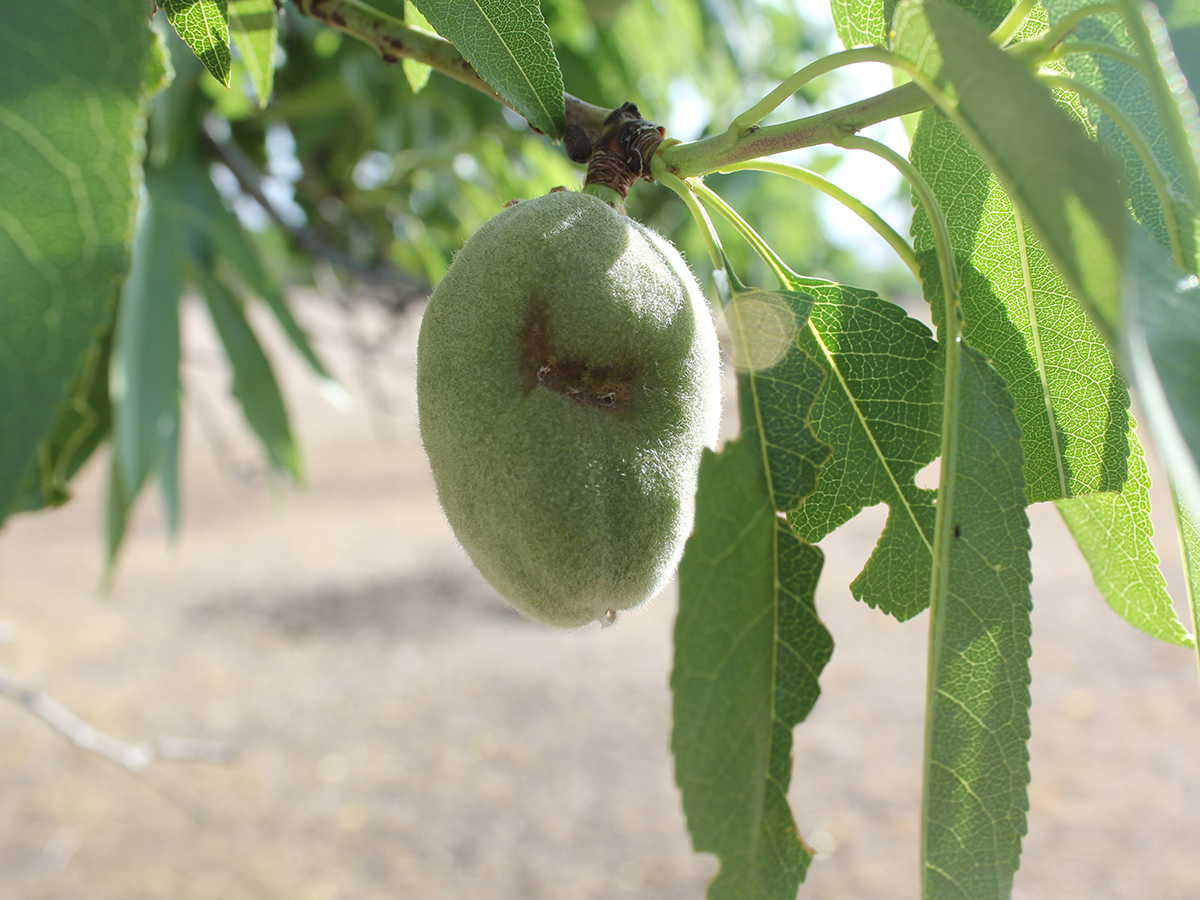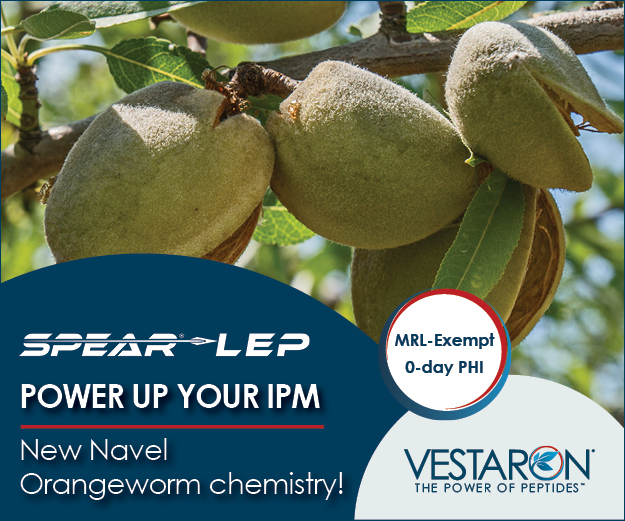
Is there a chance that insect pests in tree nuts have gotten off to an early start due to a dry and mild winter and spring?
There is the potential for higher numbers of some tree nut pests due to lower winter mortality, said Houston Wilson, assistant UC Cooperative Extension specialist (UC Riverside) at the UC Kearney Agricultural Research and Extension Center in Parlier, Calif.
Dry and warm weather can mean lower mortality for overwintering mummy nut-dwelling navel orangeworm, Wilson said. Leaffooted bugs overwinter as adults in sheltered areas, and more of them may have survived the winter due to lack of sustained cold temperatures.
“Less cold is probably better for them,” Wilson said. Their winter activity is not fully understood, he added, but when temperatures warm, they get moving, meaning potentially earlier activity in orchards.
UCCE Farm Advisor Franz Niederholzer said monitoring orchards for pests should begin early this growing season and be done often. Early pest biofix and emergence can mean more generations of some insect pests over the growing season, he said. Warmer weather after biofix is needed to drive insect development and also drives crop development. These often happen at the same rate, but not always. National Weather Service is forecasting warmer than normal temperatures for April and June, he noted, so faster insect development is possible.
USDA-ARS Entomologist Joel Siegel said early emergence of insect pests always has the potential for an additional generation depending on subsequent temperature. For trees, drought stress may impact nut split, and if splitting is earlier, there is increased potential for damage. For all insects, he said, drought conditions in the winter can reduce the impact of fungal pathogens.
The UCCE publication Sacramento Valley Walnut News recommends that growers monitor their codling moth traps to confirm flight activity and determine treatment thresholds and timings. Use trap catches, dropped nut evaluation, canopy counts and orchard history to determine need to treat second flight.
Aphid sampling should begin this month and continue throughout spring and summer. Treatment decisions can be made by following the guidelines at the UC ANR website.
While sampling for aphids, also look for spider mites and their predators in the leaflets. Yellow sticky cards for sixspotted thrips can confirm presence of this spider mite predator.
Consider hanging walnut husk fly traps in May. Treatment is based on trap catch numbers, detection of eggs in trapped females and previous year’s crop damage.
















